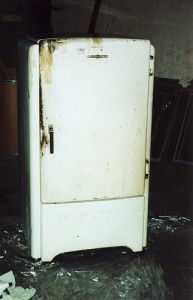 There are only so many things a person can actively do to save money on their utilities. Turning off the lights when not in a room, turning the heat down a few degrees, taking shorter showers, and the like are all great things to do to save money. In the end, however, if an appliance is old and outdated, it will be using more energy than necessary.
There are only so many things a person can actively do to save money on their utilities. Turning off the lights when not in a room, turning the heat down a few degrees, taking shorter showers, and the like are all great things to do to save money. In the end, however, if an appliance is old and outdated, it will be using more energy than necessary.
Just like any living or mechanical thing, appliances wear out. Over the years their parts will start to go, and they will die. While it may seem logical to wait for the appliance to fail completely, advancements in technology make it more worthwhile to replace them after 10 or 15 years regardless of how well they are still running. The logic is that the up-front cost of a new one will be offset by the ongoing savings in energy efficiency.
The refrigerator is one of the biggest energy consumers in the house. The door is opened quite a few times throughout the day making it work even harder. The problem with upgrading a fridge is that the initial cost can be quite high to get a really nice one. But for those who want to save some money, and can go without the LED display and fancy ice and water dispenser, they can still see savings of at least 40% if they upgrade from a pre 2001 model. The older the fridge, the more savings will be seen.
Like the fridge, the dishwasher gets used a lot in most homes. And they tend to last a lot longer since their motors are not constantly running. So for anyone running a dishwasher that was made before 1994, they can expect their machine to be using at least 10 gallons of water per cycle. Upgrading to a new machine (most of which only cost $200 to $400) will cut that nearly in half to 5.8 gallons per cycle.
Washers and Dryers are the bane of many people’s homes. While they serve a great purpose, they are often tucked away in a room downstairs that is hard to get to. Plus they are the perfect representation of chores. The dryer is also the perfect representation of an energy hog. A dryer that is more than 10 years old uses at least 37% more energy than a new model. The washer is not any better with the new models using half the amount of water the old models did.
Heating the house is expensive. Upgrading the furnace is expensive. But furnaces last a long time, usually more than 20 years. In order to get the most bang for your buck, a high efficiency furnace is the way to go. They cost more upfront, but the long-term savings are higher as well. Having an expert come and assess your current furnace and give a quote on the cost to install a 97% efficient one should be free. If yours is under 90% efficient, and more than 10 years old, it is time to consider taking the plunge and spending a couple thousand to get a new one.
Appliances save us a lot of time and trouble. But they also cost a lot of money to buy and operate. In order to save the most money on an ongoing basis, a person should make sure their appliances are up-to-date. Doing so will cost a bit up front, but over time will be more than recouped through energy cost savings. Be sure to buy the appliances that have the energy star seal on them, they use the least amount of energy (all energy savings listed in this article were based on new energy star rated appliances).
